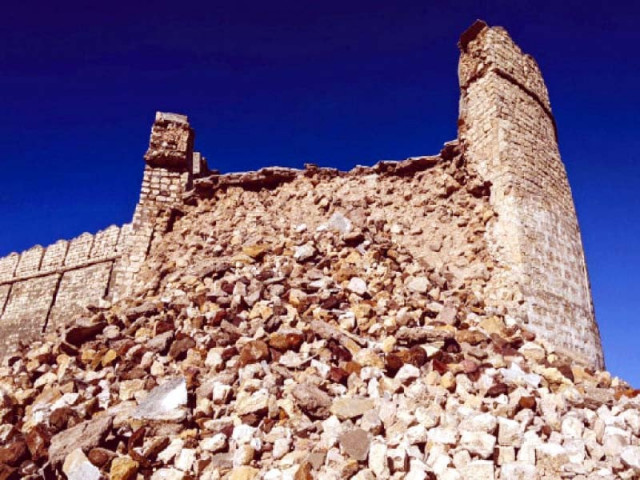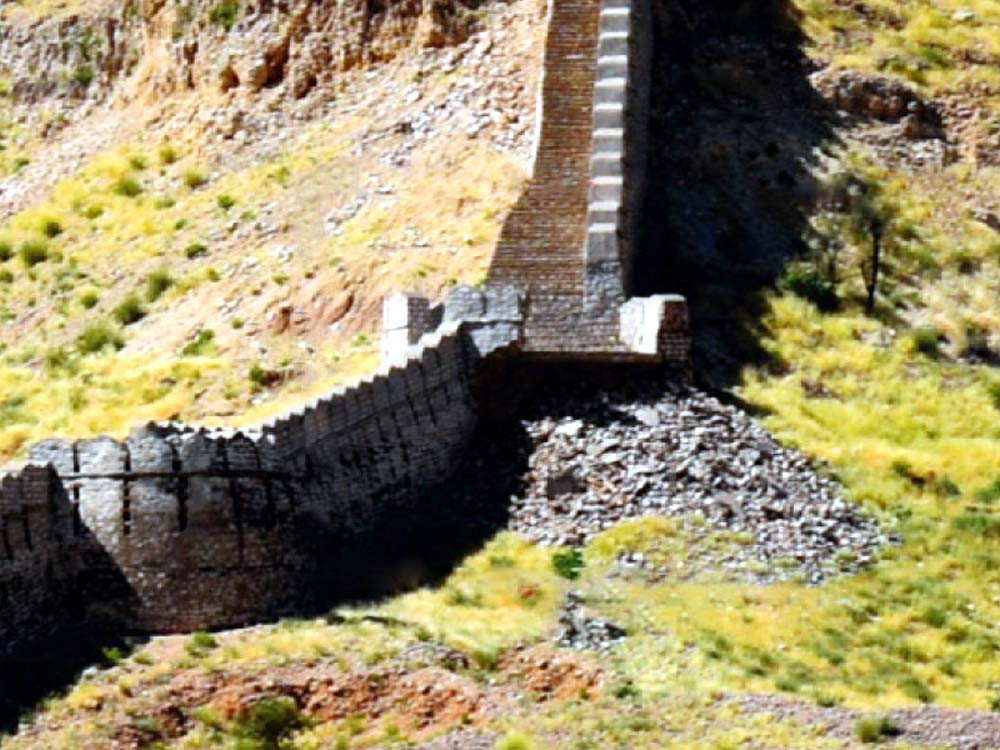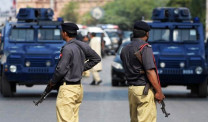Floods have damaged ‘Great Wall of Sindh’
Portions of Ranikot Fort washed away by torrents

Some portions of Sindh's historical Ranikot Fort - known as the Great Wall of Sindh - have collapsed during the heavy rainfall and floods. The historical site is situated near Sann in Sindh's Jamshoro district.
According to a report, submitted to Sindh Chief Minister Syed Murad Ali Shah, the old walls were already vulnerable and would not be able to withstand the onslaught of heavy downpour - said to be the heaviest in the last 100 years.
Ranikot is believed to be one of the world's largest forts with a circumference of approximately 32 kilometres. "The walls of the fort have collapsed due to landslides and some of them washed away in the area of Mohan Gate," the report said.
The report added that the walls were further damaged due to a faulty drainage system within the fort, as the slopes were not properly structured to drain out water. "A few restored walls collapsed due to settlement of the soil, leaving the foundation and joints vulnerable, resulting in the collapse," the report added.
The foundations of the walls of Ranikot are not deep and they are standing on the top of cliffs making them susceptible to heavy downpours and slight movement," said Endowment Fund Trust (EFT) Secretary Abdul Hamid Akhund.
Akhund further said that they have been working hard for the last five years to preserve the fort, but incessant rains have badly damaged the historical site. "The rain percolated in the walls due to which the bricks fixed with limestone started collapsing," he added.
After receiving the report, the CM urged the EFT to hold a disaster management conference in the city to study the conditions.
Shah also directed the EFT secretary to conduct a survey of the damages and compile results so that appropriate steps could be taken.
The chief minister assured Akhund that his government would extend maximum support to the EFT and he desired all the concerned stakeholders must participate in the venture.
Murad also asked the EFT to establish a Disaster Management Cell for heritage monuments as a permanent autonomous body comprising all stakeholders.
According to the officials, the link road from Sann to Ranikot is also damaged by the floods causing inconvenience for the visitors to reach the site.

"After proper assessment, the provincial government will restore the road," the spokesperson for the culture department said.
The fort, listed as historical site under the Antiquities Act 1975, has been neglected by the government authorities, he said.
"Before the 18th Amendment, the fort was given under the control of the federal archaeology department who had defaced the heritage by repairing it with cement rather than preserving it with original material pursuing archaeological drawings," sources privy to the development told The Express Tribune adding that EFT has somehow worked to preserve it. Some historians give credit of building the Ranikot Fort to the Talpur rulers, many believe it existed even before the Kalhora dynasty that ruled Sindh and South Punjab from 1701 to 1783.
"The provincial government with the help of international organisations must conduct radiocarbon dating of the fort to determine its age," an official working in culture, tourism and antiquities department said.
Published in The Express Tribune, October 21st, 2022.



















COMMENTS
Comments are moderated and generally will be posted if they are on-topic and not abusive.
For more information, please see our Comments FAQ